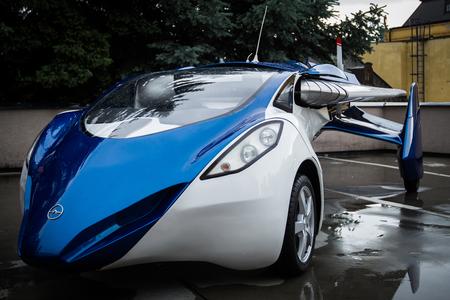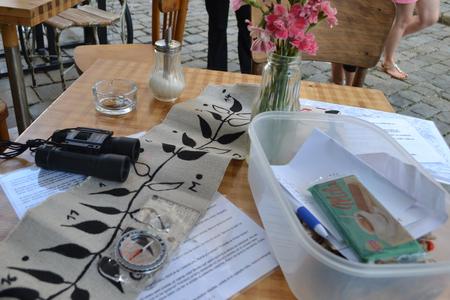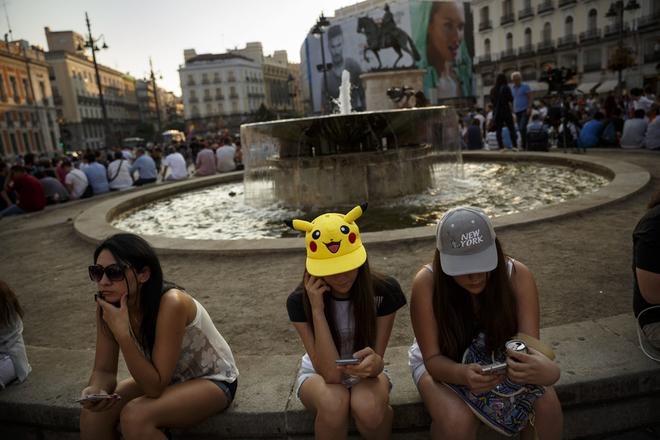The world of sci-fi characters called Pokémon was popular in Slovakia, just like in the rest of the world, 20 years ago by way of cartoons, exchange cards, sticker albums and Nintendo Game-boy games. Now it is back. The new Pokémon game has broken all records and become a phenomenon of the year 2016 also in Slovakia.
Pokémon GO, developed by US game development studio Niantic, connects real and virtual worlds in one scene. In the game, players (or trainers) collect and evolve well-known virtual creatures and put them to fight against training bots in special virtual gyms.
The game brings the fantasy story of the nineties to people’s everyday lives, said Matej Lančarič, head of mobile marketing of Slovak game development company Pixel Federation.
“Pokémon creatures appear in front of suburban blocks of flats, in your favourite restaurants, in shops, on the bosom of your wife, or wherever you can imagine them to,” Lančarič told The Slovak Spectator.
Trainers go outside
The game is based on so-called augmented reality (AR) which scans the real environment and adds several virtual objects which players seek, train and use in fighting duels. There is an opportunity for people to escape from the real world to those virtual, said Ondrej Macko, editor-in-chief of the TouchIT.sk website.
“Pokémon was here long ago, but after it appeared on smartphones almost everyone could try to combine the real and the virtual world, it worked immediately,” Macko told The Slovak Spectator, but admits he expects “this craze” to be soon replaced by something new.
Each Pokémon trainer who wants to be successful has to leave their home and explore their surroundings. The game utilises maps and exact coordinate location of Pokémon creatures, PokéStops and others, said Peter Dragula, chief-editor in Sector.sk game website.
In the game, Pokémon trainers search for creatures alone, in small teams or join hunting meetings where all hunters used so-called “lure modules” to entice as many creatures as possible. Joint hunts have become very popular also in Slovakia where several meetings have taken place for example on Rybné Square, Kollárovo Square and Sad Janka Kráľa park in Bratislava, and in public places in Košice, Banská Bystrica and other cities.
Global phenomenon
This huge bestseller of the summer of 2016 broke gaming industry records immediately after its release. About 23 million active users were playing Pokémon GO five days after the release whereby surpassing Twitter's visit rate and becoming the most popular mobile game in the US, according to statistics of Pixel Federation.
In Slovakia, there are no official statistical data how the game has spread. Based on Facebook groups Macko estimates that there are around 7,500 real users. They are mainly slightly better off people under 35 years who live in large cities, Macko said.
“They have better cell phones with mobile internet and, surprisingly, enough time,” Macko said.

Lančarič pointed out that while people play Pokémon GO on average 34 minutes a day, they only stay on Facebook for 23 minutes. Currently, the game earns 10 million dollars daily which is twice the standard revenue in the gaming industry, he said.
“Despite the fact that the game is still not available in all countries, it spread from day to day like the plaque,” Lančarič said.
Available AR games
The Slovak game market has provided AR in various games and apps for approximately 5 years, but the technology has not spread widely so far as none of the preceding apps was as sophisticated, simple and fun as Pokémon GO, said Ján Trangel of Živé.sk website.
Before Pokémon GO, authors created the AR game Ingress in which players as agents fight against each other in two fractions through portals which represent real locations such as statues or buildings. AR applies also in ghost chasing game SpecTrek, an app for tracking the night sky, and Lego catalogue, according to Dragula.
Augmented vs. virtual reality
The current game universe recognises two technologies which embed virtual visualisation into reality. While AR utilises phone cameras to pick up the reality, like in Pokémon GO, virtual reality (VR) brings players into virtual world via a special VR headset.
VR technology daily brings many games to the international app market such as Cirque de Soleil and treasure hunt game, Macko said.
In addition to the gaming industry, people use VR technology in many fields including data manipulation, medicine, architecture, robotics, physics and film industry, according to the Virtualnarealita.eu website.
VR in Slovakia
In July, the Slovak development team of Pixel Federation disclosed its own VR game called CoLab which brings players into a labyrinth full of puzzles, easier and more complex, to solve. People around the world know this platform under the name “escape room”.
The game reached almost 50,000 downloads during its first month also thanks to company Samsung which has placed it on the front page of its VR games store, Lančarič said. Currently, about 20,000 people have resolved altogether 230,000 puzzles in 2,600 hours of playing CoLab.

Other development
There are no other significant VR projects created by other Slovak game developers. Dragula explains that there are only small studios in Slovakia which lack the capacity to create such massive global games with servers all around the world.
“They can score with something smaller and local but probably without attractive economic returns,” Dragula said.
Only individuals with great will, enthusiasm and fun in developing games can achieve success, said Lančarič and pointed to Pokémon GO‘s developer Niantic which at first had developed apps for a few years and received investment from Google, then successfully purchased the rights to use Pokémon characters in the game.
Macko sees Slovak potential in the commercial sphere such as those apps for identification of number of available rooms or discounts and options for direct orders at hotels.
Edification for people
Besides development of games, developers organise events during which they try to educate people and spread the VR idea. So far, Pixel Federation has organised two events called Virtual Federation.
“We strive to bring the VR platform to the wider public and allow visitors to look behind the scenes of development, technology and not least the latest gaming trends,” said Lančarič.
While the studio offered expert lectures and presentations of devices and games at both, the first event interested mainly young developers as it focused on technical concepts, while the second addressed rather gaming topics.
Promising future
While AR and VR face a promising future, experts expect that it is only a matter of time before dozens of different clones of Pokémon GO and other games using these technologies emerge.
“People will soon search not only for Pokémon creatures but also for dragons, aliens and others,” said Dragula.
Lančarič sees that new technological trends come to marketing which may be relevant for various target groups, for example, in linking elements of real life and AR or VR for personalised location-based ads.
AR and VR may lure not only players but also ordinary people, into new worlds and offer them new experiences, according to Dragula.



 People all over the world meet together at joint hunts of Pokémon creatures. (source: AP/SITA)
People all over the world meet together at joint hunts of Pokémon creatures. (source: AP/SITA)